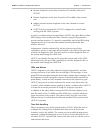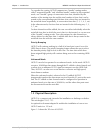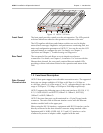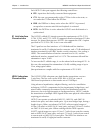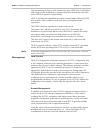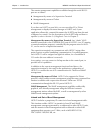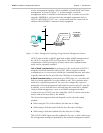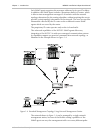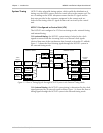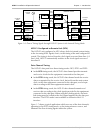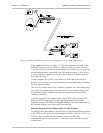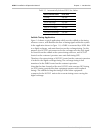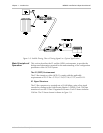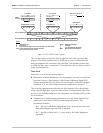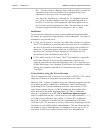
HCD-E1 Installation & Operation Manual Chapter 1 - Introduction
01/01/01 08:07 Functional Description 1-11
For example, the following paths can be made available for the management
traffic, when the management station is attached to HCD-E1:
•
The network is connected to the network management station using a
single serial communication link, attached to the CONTROL DCE port of
HCD-E1 (system 1).
•
In-band communication through the HCD-E1 No. 1 main and sub links is
used to manage the remote units connected to the remote ends of the
corresponding links:
− HCD-E1 No. 2 is managed via the main link of HCD-E1 No. 1.
− The sublink of HCD-E1 No. 1 is connected via the E1 transmission plant
to a remote communication node, which is used to perform rerouting.
The rerouting is based on a digital cross-connect system and E1/T1
converter, DXC-30, also offered by RAD. The DXC-30 can be
configured to support the RAD proprietary in-band management
protocol using time slot 0.
− The DXC-30 transfers the management traffic to several of its ports.
These ports are connected to other systems, e.g., HCD-E1 No. 3,
MEGAPLEX-2100(*) No. 4, etc. Each remote system can relay the
management traffic to other equipment.
Thus an entire wide-area network can be managed by means of a network
management station connected to any HCD-E1 unit (or to any of the other
RAD equipment which supports SNMP management).
Control of Remote Unit from Central Unit
As described above, the operation of the HCD-E1 system is basically
asymmetrical, i.e., the HDSL subsystem inherently operates in a
central (master)/remote (slave) mode. HCD-E1 takes advantage of this
characteristic to expedite the configuration, management and supervision
tasks related to the remote unit.
All the parameters that determine the end-to-end system performance can
be configured on the central unit only. They are automatically transferred
(downloaded) from HCD-E1 configured as central to the unit configured as
remote, using the eoc channel. The user of the local unit configured as
central can also initiate tests on the unit configured as remote.
Using the remote management, the user of the local unit can read and clear
through the eoc channel the alarm messages and performance parameters of
the unit at the remote site.
Thus, HCD-E1 configured as central unit serves as a full-function proxy agent
for the remote unit with respect to all the management methods (LCD,
supervision terminal, Telnet, and SNMP). When using in-band management,
each unit is managed separately and operates as an agent in its own right.



